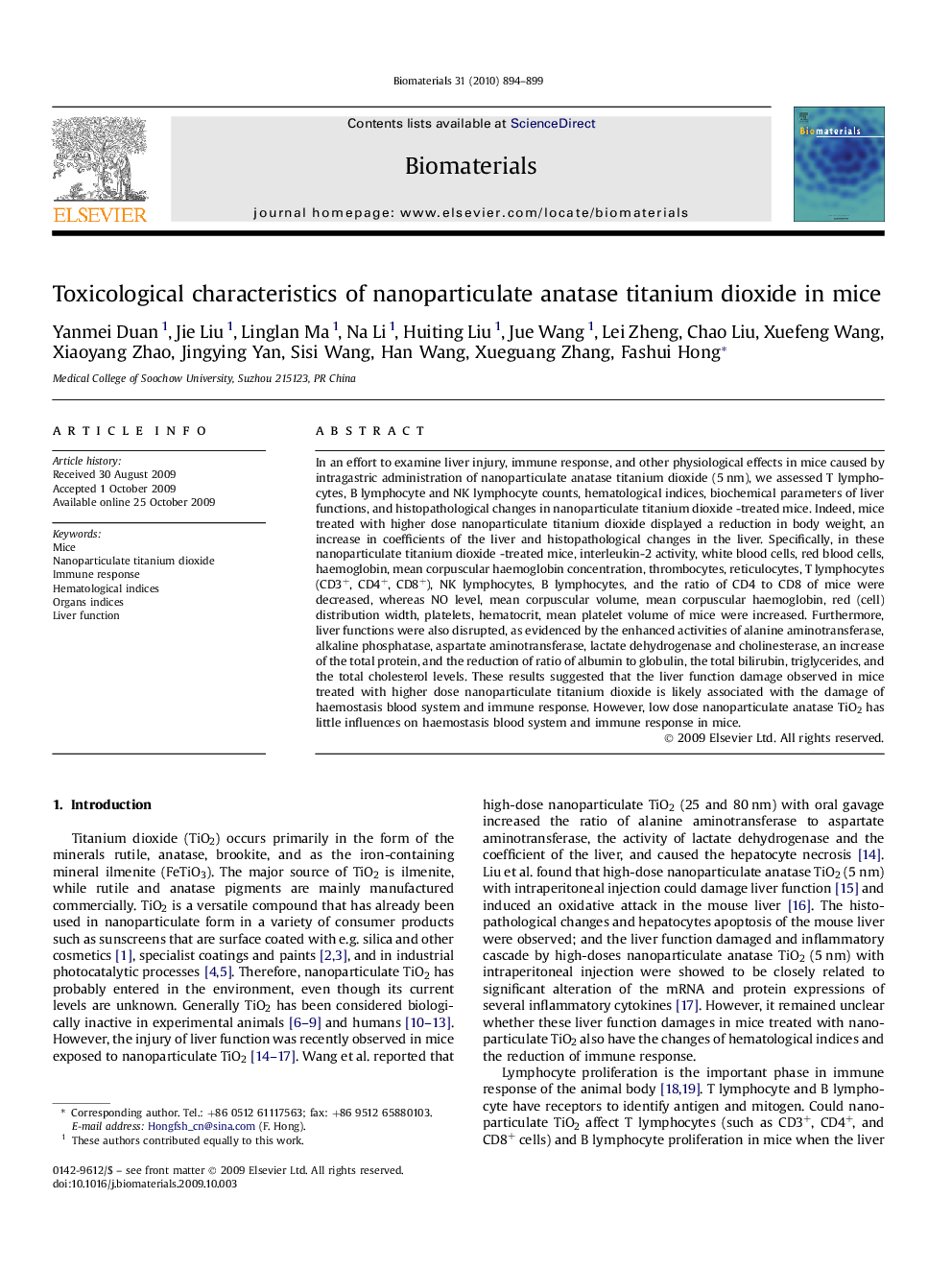| Article ID | Journal | Published Year | Pages | File Type |
|---|---|---|---|---|
| 9913 | Biomaterials | 2010 | 6 Pages |
In an effort to examine liver injury, immune response, and other physiological effects in mice caused by intragastric administration of nanoparticulate anatase titanium dioxide (5 nm), we assessed T lymphocytes, B lymphocyte and NK lymphocyte counts, hematological indices, biochemical parameters of liver functions, and histopathological changes in nanoparticulate titanium dioxide -treated mice. Indeed, mice treated with higher dose nanoparticulate titanium dioxide displayed a reduction in body weight, an increase in coefficients of the liver and histopathological changes in the liver. Specifically, in these nanoparticulate titanium dioxide -treated mice, interleukin-2 activity, white blood cells, red blood cells, haemoglobin, mean corpuscular haemoglobin concentration, thrombocytes, reticulocytes, T lymphocytes (CD3+, CD4+, CD8+), NK lymphocytes, B lymphocytes, and the ratio of CD4 to CD8 of mice were decreased, whereas NO level, mean corpuscular volume, mean corpuscular haemoglobin, red (cell) distribution width, platelets, hematocrit, mean platelet volume of mice were increased. Furthermore, liver functions were also disrupted, as evidenced by the enhanced activities of alanine aminotransferase, alkaline phosphatase, aspartate aminotransferase, lactate dehydrogenase and cholinesterase, an increase of the total protein, and the reduction of ratio of albumin to globulin, the total bilirubin, triglycerides, and the total cholesterol levels. These results suggested that the liver function damage observed in mice treated with higher dose nanoparticulate titanium dioxide is likely associated with the damage of haemostasis blood system and immune response. However, low dose nanoparticulate anatase TiO2 has little influences on haemostasis blood system and immune response in mice.
